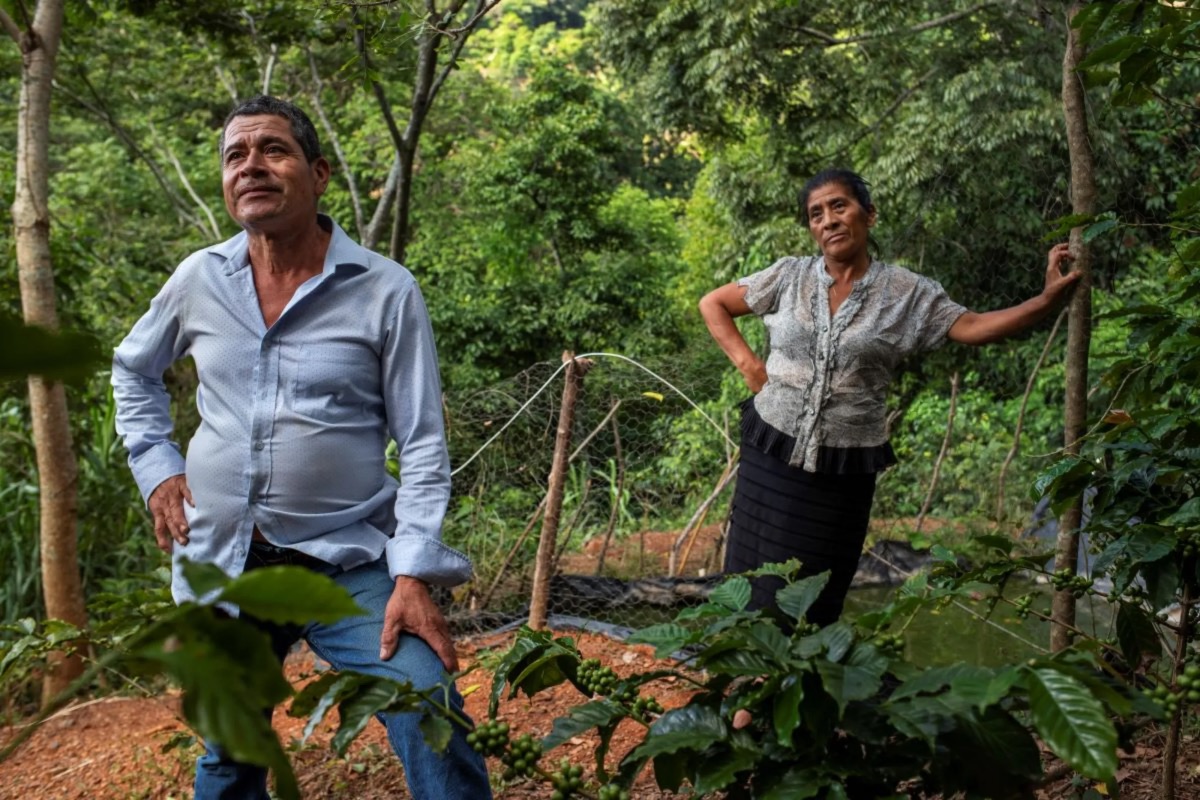
With few job opportunities and food harvests hit by climate change, more young Guatemalans are leaving poor farming communities in search of a better life in the United States. ANASTASIA MOLONEY, of Thomson Reuters Foundation, reports…
Huehuetenango, Guatemala
Thomson Reuters Foundation
After weeks of sleepless nights, Guatemalan farmer Lorenza Mendoza heard the words she had prayed for when a people smuggler called to say ‘Your son is OK. He made it.’
About six months ago, Mendoza’s 22-year-old son left his remote village in Guatemala’s eastern Chiquimula province for the United States in search of a better life.
“When he left, I couldn’t eat or sleep. I cried in silence,” said Mendoza, at her small mountaintop coffee and bean farm.

The Lorenza family, whose son migrated to the United States earlier this year, at their small farm in the eastern province of Chiquimula, Guatemala, on 7th September, 2023. PICTURE: Thomson Reuters Foundation/Fabio Cuttica
The Mendozas sold a plot of land to pay a smuggler, or coyote, 110,000 quetzels ($US14,000) to take their son north.
After a dangerous 32-day, 2,700 kilometre journey through Mexico by bus and rattlesnake-infested desert, he crossed the US border illegally on his first attempt.
With few jobs, young men are deserting impoverished farming communities in their droves as extreme weather driven by climate change hits food harvests.
Within a month, he had found a decently paid job fixing air conditioners in New Jersey.
With few jobs, young men are deserting impoverished farming communities in their droves as extreme weather driven by climate change hits food harvests.
In drought-prone rural areas, eating only three to four tortillas a day is considered normal in a country with one of the world’s highest chronic child malnutrition rates.
The lack of opportunities has pushed more migrants to leave Guatemala for the United States than the other “Northern Triangle” countries, El Salvador and Honduras.
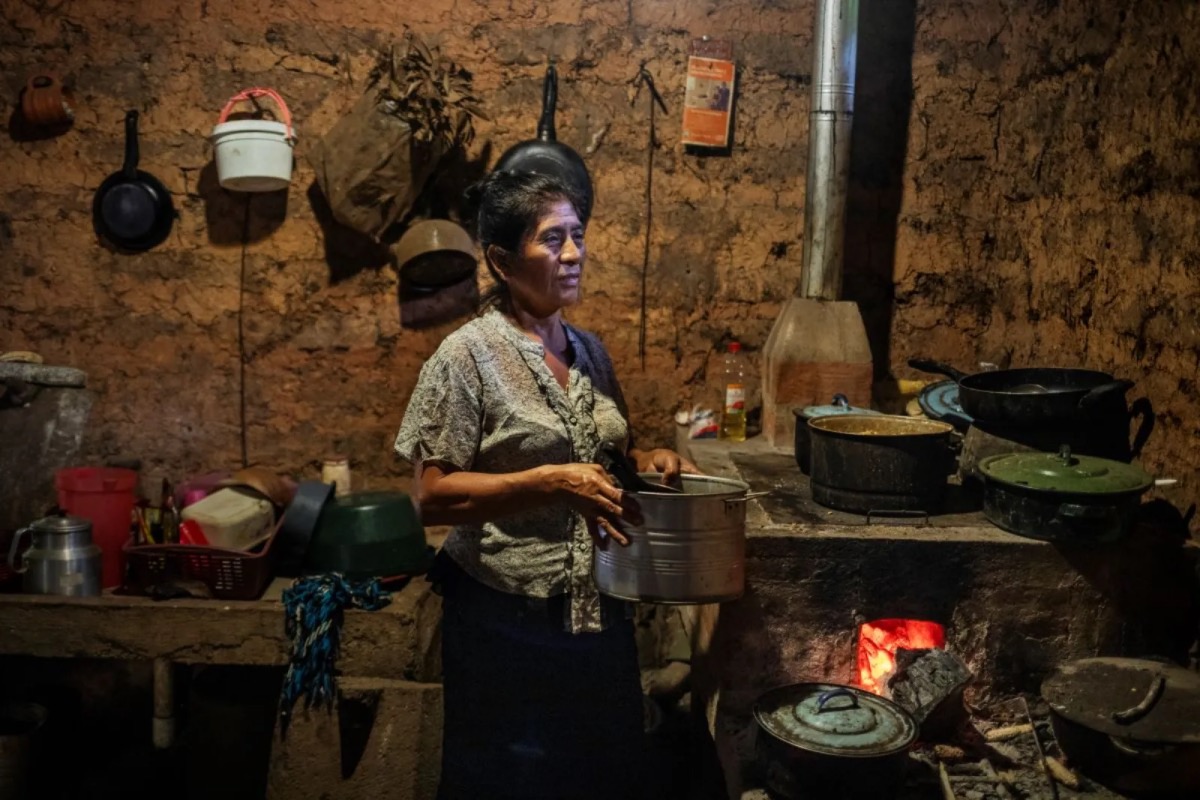
Lorenza Mendoza, whose son migrated to the United States earlier this year, in the kitchen of her farm in the eastern province of Chiquimula, Guatemala, on 7th September, 2023. PICTURE: Thomson Reuters Foundation/Fabio Cuttica
The number of Guatemalans arriving at the US border soared fivefold from 2020 to 2022, to 233,000 last year, US data shows.
Migration is already a campaign theme in the 2024 US presidential race with President Joe Biden’s Republican opponents blaming him for the spike in illegal arrivals.
Guatemala’s President-elect, Bernardo Arévalo, says he wants to work with the United States to tackle migration and expand temporary US work programs.
Arévalo, due to take office in January, has said hunger, poverty and migration are intertwined and pledged to invest in poor areas to counter the “historical marginalisation of Indigenous populations”.
With two-thirds of Guatemala’s 17 million people living on less than $US2 a day, many young men look to migrating as their only option to earn a living and help their families.
Remittances from the United States have quadrupled to $US18 billion in the last decade, outstripping exports.
Nowhere is the impact of migration more apparent than in Guatemala’s western highlands of Huehuetenango province where well-kept evangelical churches outnumber schools and clinics.
Along the mountain roads, palatial new brick houses are adorned blue tinted windows, built with dollars sent by relatives in the United States.
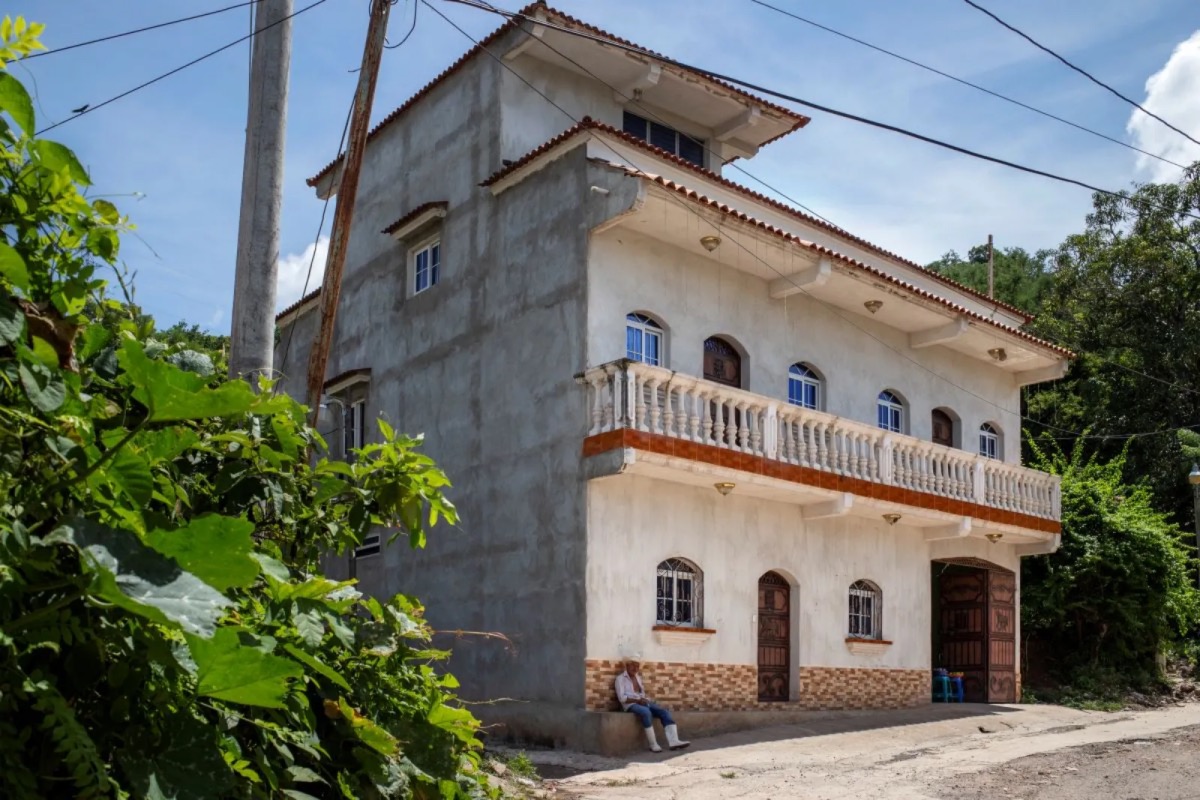
A house in the eastern province of Chiquimula, Guatemala, built by dollars sent by relatives in the United States on 8th September, 2023. PICTURE: Thomson Reuters Foundation/Fabio Cuttica
In the high-altitude villages of Chiantla, generations of men have seen chasing the American dream as a rite of passage that confers social status.
In Canton El Rancho, a hamlet of small-scale potato and maize farmers, Lucas Cano returned home in 2009 after working for three years as a laborer in Alabama.
With little schooling, many undocumented migrants work in the shadows – in kitchens, fields and in construction.
“I left when my children were young to give them a better education. They’re better fed and clothed. I bought land and built my house. So mission accomplished,” said Cano, whose two sons have migrated to the United States.’
We rely on our readers to fund Sight's work - become a financial supporter today!
For more information, head to our Subscriber's page.
In rural Guatemala, the few jobs available are seasonal work as a farm laborer or coffee picker earning about 50 quetzals ($US6) a day. Others earn less than $US10 a day building the new houses bankrolled by remittances.
“You can’t survive on a daily wage. There’s no steady work. In the US, I earnt $1,300 a month. That’s why you make the sacrifice,” said Cano.
“Every two to three months someone leaves. Some return, some don’t. It’s the dream of every young person,” the community leader said. “To stop migration you need jobs where there’s a lot of poverty, but what company would want to invest here?”
Humanitarian agencies, the UN, and US development agency USAID spend tens of millions of dollars each year to raise rural living standards to encourage people to stay put.
Aid agency CARE, which supports farmers and women in Huehuetenango and other poor areas, says people migrate as extreme poverty in marginalised and Indigenous communities has become worse due to the impact of climate change and "environmental degradation."
Silvia Raquec, who heads a program helping returned migrants at Guatemalan non-profit Pop No'j Association, said the government had failed to "guarantee the necessary and minimum conditions so that people are not forced to migrate".
"The pandemic exacerbated extreme poverty and high food prices, so people find it impossible to find a way to survive in their communities," said Raquec.
In these mountains, finding a coyote is easy, either by word-of-mouth, or advertisements on local radio. Villagers view smugglers as skilled guides.
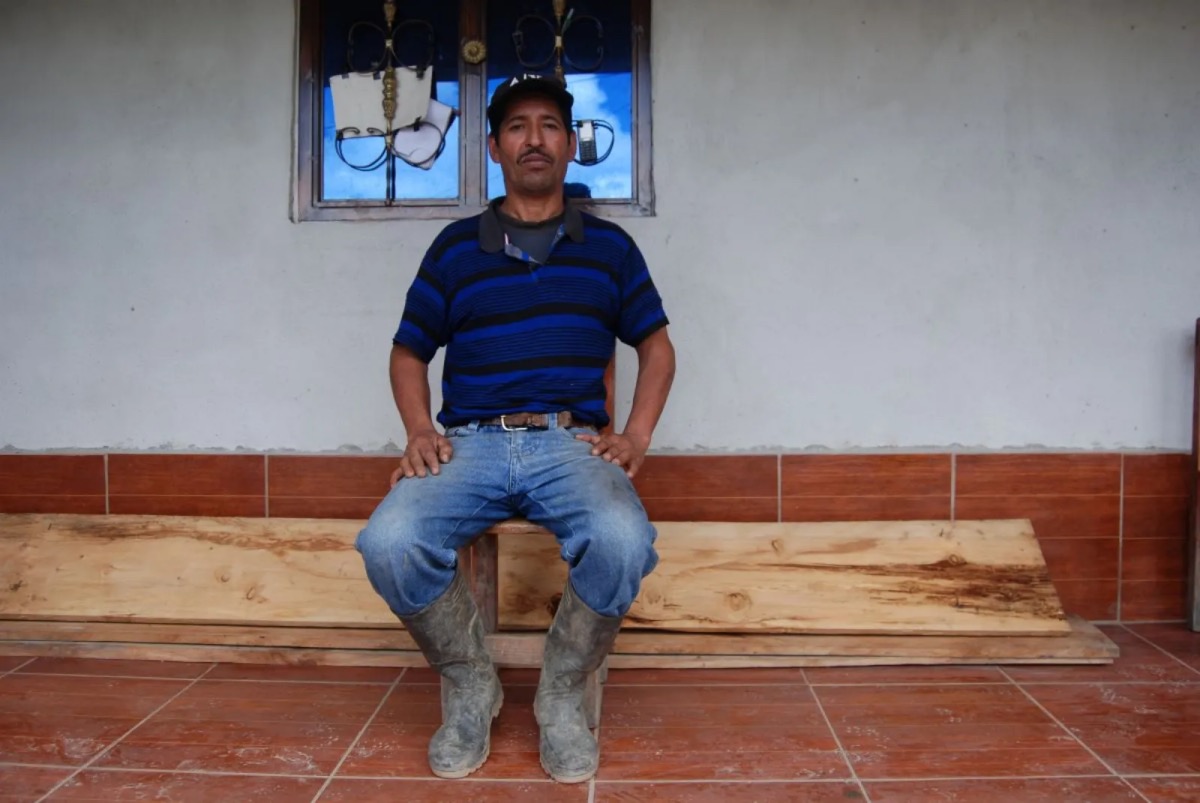
Lucas Cano, who migrated to the United States and then returned to build his house in the hamlet of Canton El Rancho, in the western highlands of Huehuetenango, Guatemala, 4th September, 2023. PICTURE: Thomson Reuters Foundation/Anastasia Moloney.
Reaching the US-Mexico border, migrants cross by river or scramble under or over the border wall in a dangerous cat-and-mouse game with police.
Not all make it. Some die of thirst in the desert or suffocate in trailers, while other migrants fall victim to cartel violence in Mexico.
The International Organization for Migration documented 686 deaths and disappearances of migrants on the US-Mexico border in 2022, making it the world's deadliest land migration route.
Regardless of the risks and tighter UScontrols, many said they would keep trying.
"We'd only not go if the coyote said: 'I'm not working anymore.' But their work never stops," said Cano.
For women, domestic and sexual violence plays a part in the decision to migrate.
Lesviandy, an Indigenous 28-year-old woman from another Huehuetenango village, said her 2016 attempt to reach the United States was driven by violence.
"I wanted to escape my father who'd get abusive when drunk," said Lesviandy, who declined to give her surname.
She was arrested in Mexico and deported, but hopes to try again despite the stigma faced by women traveling alone.
"We're called indecent women. If a woman migrates, it's because she's going off with someone or has done something bad," said Lesviandy, wearing a traditional embroidered dress.
Her friend, 23-year-old Orieta, was about to leave for the United States in February, but fell ill.
She had paid a coyote about $US11,600, financed by loans from relatives and friends.
"I'm thinking about going soon...but having a job that pays well would probably make me stay," said Orieta.
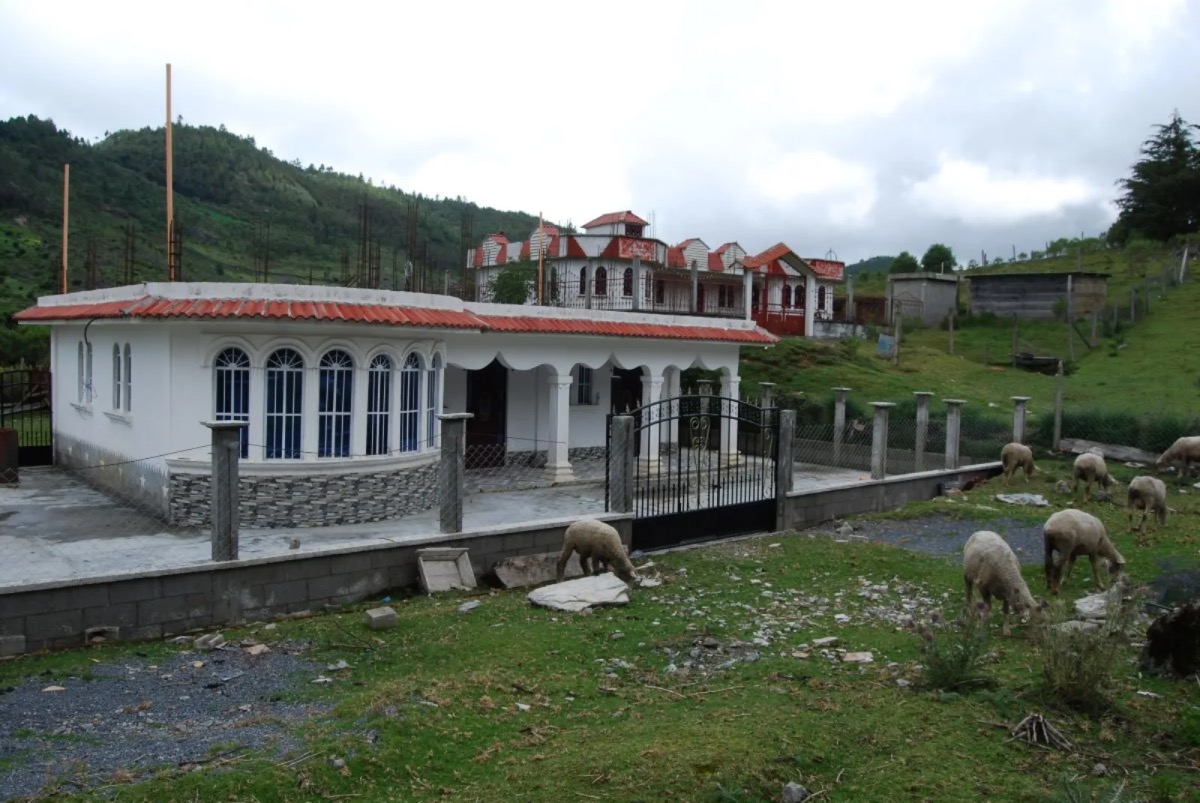
A house in the western highlands of Huehuetenango, Guatemala, built with dollars sent by relatives in the United States on 4th September, 2023. PICTURE: Thomson Reuters Foundation/Anastasia Moloney.
Many said heightened US border security and adding sections to the border wall, which the Biden administration pledged to do in October, would do little to deter them.
"Coyotes would benefit as they'd charge more if it's harder to get through. They always find a way," said Orieta.
"Governments can make whatever decisions, but people don't care as they have their own needs and dreams," she said.






